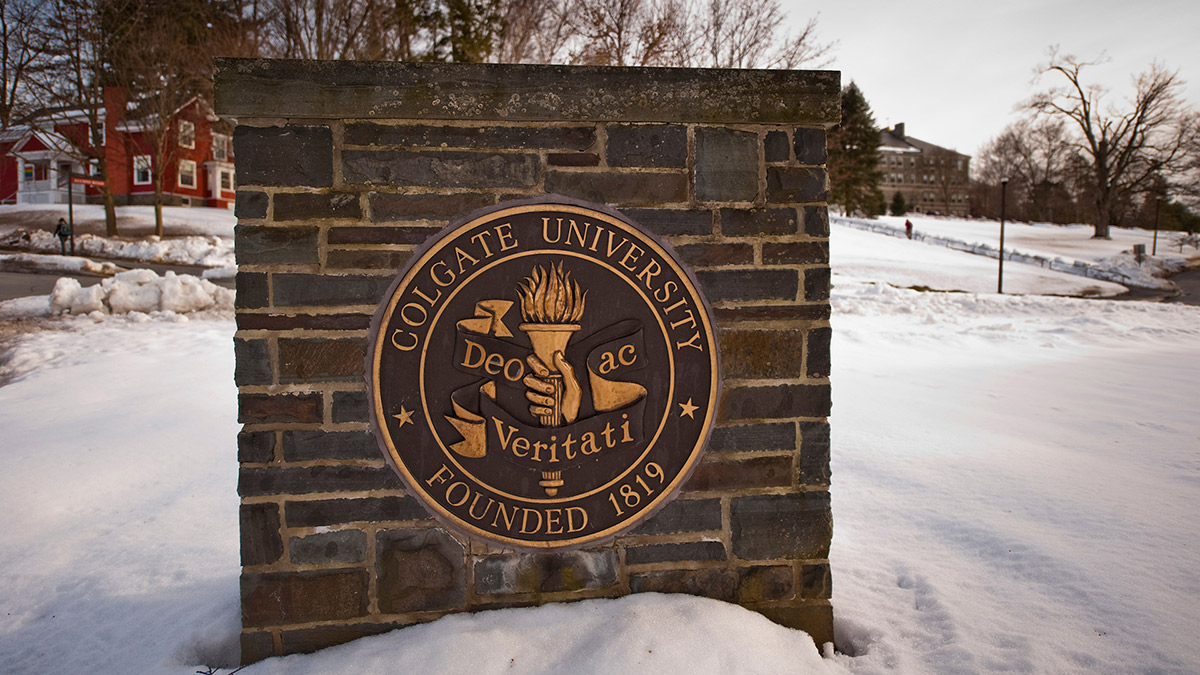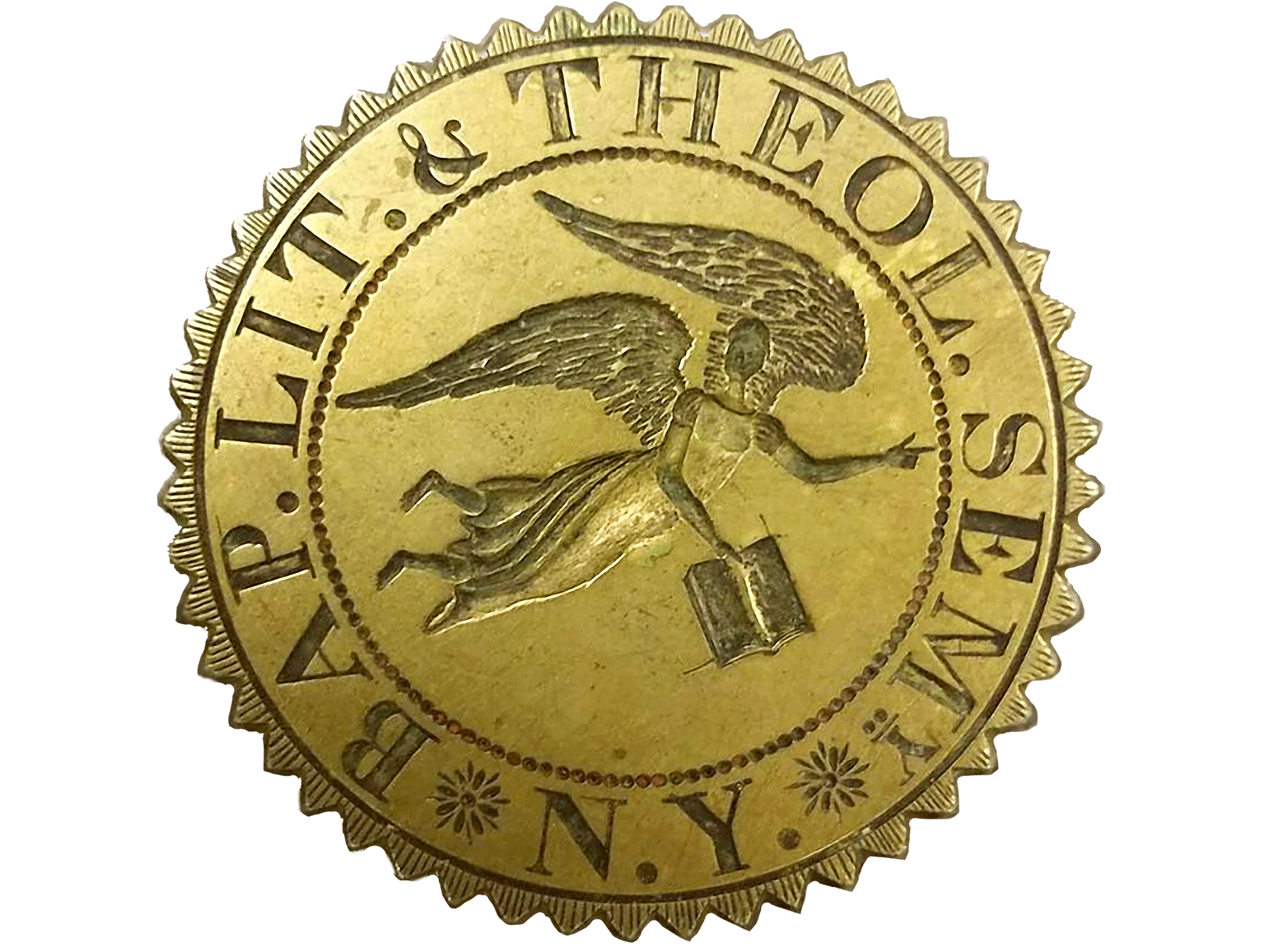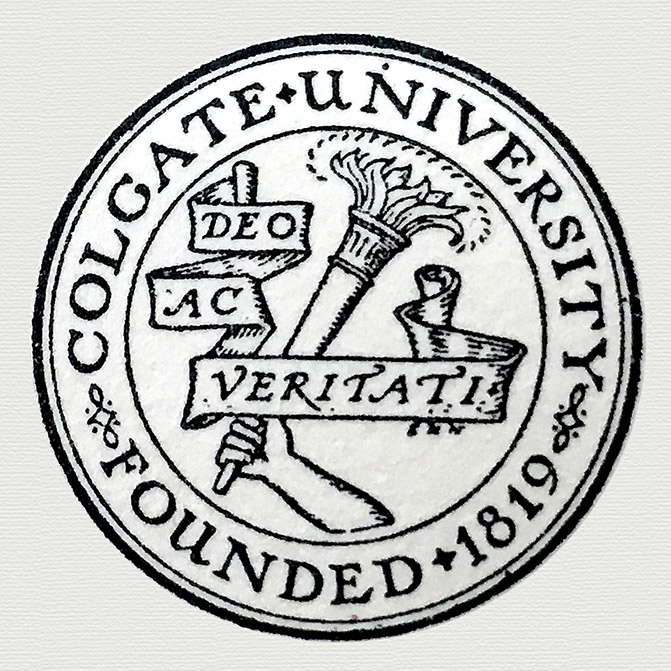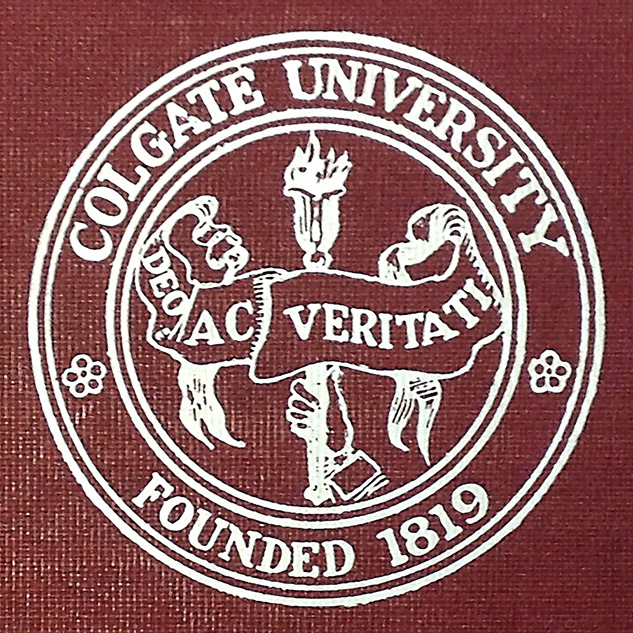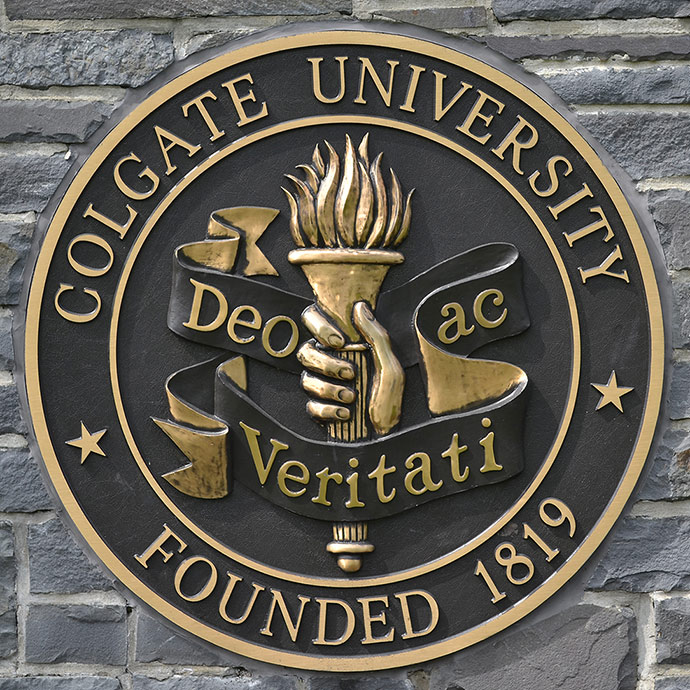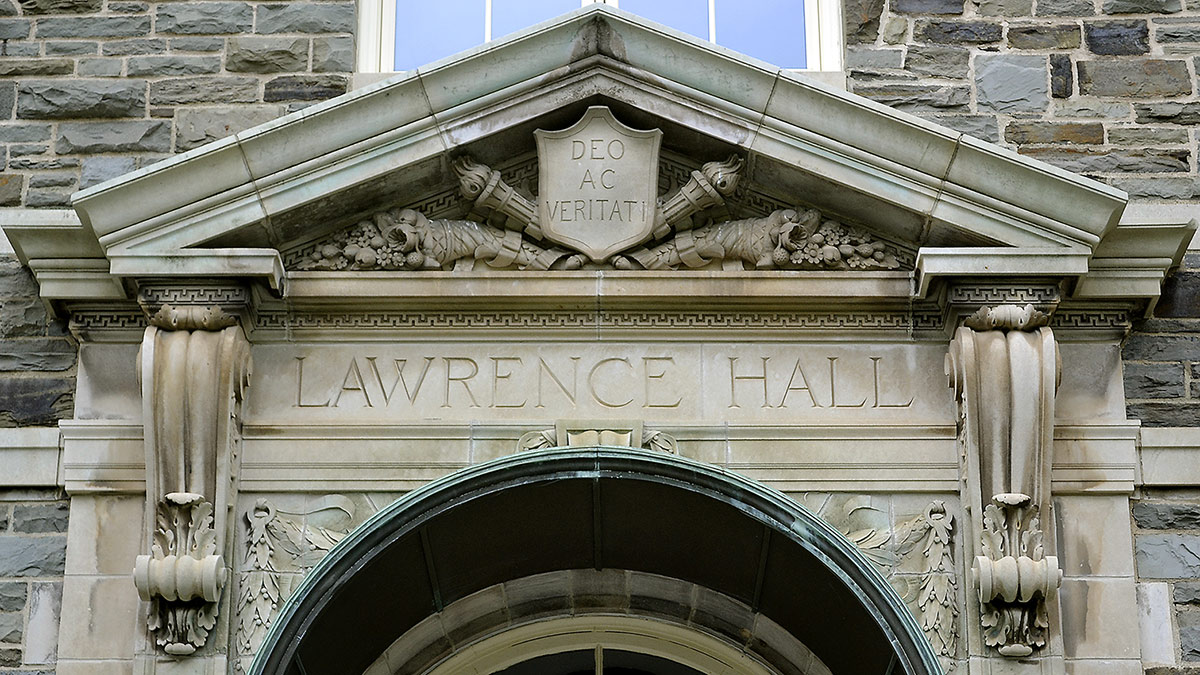
By Michael Holobosky ’19
This is the origin story of Colgate’s motto and seal, as told in the gallery guide to “Deo ac Veritati: Pursuing the Classics at Colgate,” an exhibition celebrating the Bicentennial. The culminating project of the students in Professor Rebecca Ammerman’s course CLAS313: The Classics and the History of Colgate University, the exhibition was mounted in spring 2017 on the third floor of the Case-Geyer Library central stairwell.
1846Open Primary tabs configuration options

